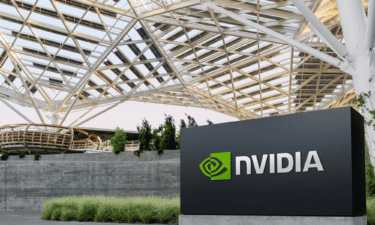BlackBerry (TSX:BB)(NYSE:BB) has yet to earn its five stars to join the ranks of TSX’s tech superstars like Shopify and Lightspeed Commerce. However, 2021 appears to be the breakout year of the erstwhile smartphone maker. The long wait could be over for investors who have been betting on BlackBerry to shine.
The shift to software and services is starting to pay off. Thus far this year, BlackBerry’s gain is 70.38%. At $14.38 per share, the trailing one-year price return is 97.5%. In the last three years, the growth stock’s total return was only 7.56%. While the climb to $36 (52-week high) is unlikely, the price could double by year-end.
Pivot to two business units
BlackBerry’s Q1 fiscal 2022 (quarter ended May 31, 2021) results weren’t earth-shaking but the lower losses versus Q1 fiscal 2021 were noticeable. From US$636 million, the net loss dropped significantly to US$62 million. However, revenue fell 15.53% to US$174 million.
BlackBerry’s Executive Chairman and CEO John Chen said the quarter was mostly organizing the software and services business around two biggest market opportunities: Internet-of-Things (IoT) and cybersecurity. He added the $8.4 billion company has done a good job of product development in the past few years.
Management estimates IoT revenue for fiscal 2022 between US$180 and US$200 million. In cybersecurity, Chen said BlackBerry has the most mature AI engine in the space. It can block ransomware years ahead of time without the need to update technical issues. The revenue forecast, however, would be at the lower end of the US$495 million to $515 million range.
New business partnerships
BlackBerry gained new businesses through partnerships. TELUS, Verizon, and Vodafone are the latest additions. Alert, its critical event management product, has been integrated with Microsoft teams. Chen also announced other strategic partnerships.
Volvo Group chose BlackBerry’s QNX operating system and hypervisor as the foundation for its Volvo Dynamic Software Platform. Chinese electric carmaker WM selected QNX to power its W6 all-electric SUV. Over 195 million vehicles have BlackBerry’s QNX embedded in them.
Chen also announced businesses of highly regulated customers in the financial services sector. Several other projects will keep BlackBerry busy throughout fiscal 2022.
Government and healthcare
BlackBerry’s partnerships or collaborations extend to governments and the healthcare sector. Topping the list is the federal government of Canada, the White House Communication Agency, the U.S. State Department, the Department of Treasury, the U.S. Department of Defense, and the U.S. Department of Energy and Department of Commerce.
Chen added names like the Netherlands Ministry of General Affairs, the Australian Department of Environmental and Energy, the UK NHS Health Services, University Health Network, Canada. Last, BlackBerry lab is working on future high-growth opportunities. The goal is to harness the power of the entire technology portfolio on the company’s AI/ML engine in IoT.
Grow the top line
According to Chen, the software and services business is BlackBerry’s key market opportunity. Because of the growing pipeline, the company is beefing up sales headcounts. Chen revealed that his main focus is to grow the top line by increasing investment in the software business units and expand the footprint. The result should be double-digit billings growth this year.







